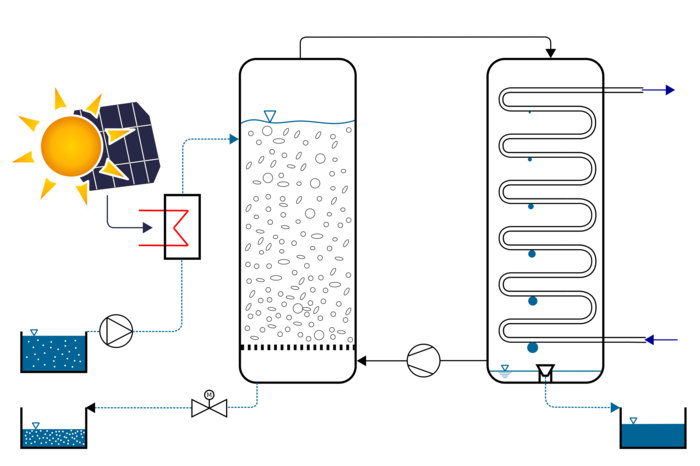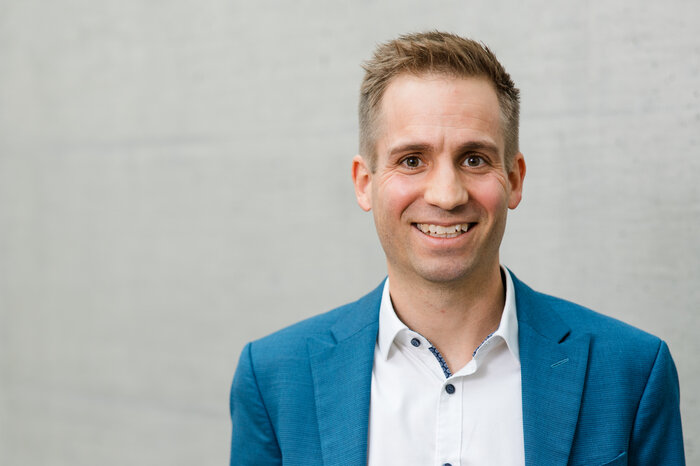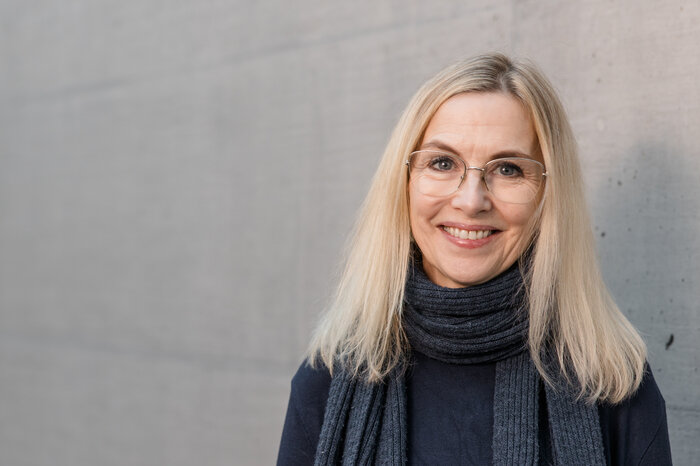Humidification of air in a bubble column
Increasing water scarcity worldwide is leading to a growing need for alternative water treatment systems. Large-scale industrial seawater desalination processes are technologically complex and can sometimes only be operated economically on a large scale (>10 million liters/day)
That is why they are not suitable, especially in rural areas, which are particularly often affected by water shortages. With the humidification-dehumidification process (HDH for short), on the other hand, it is possible to use renewable energy (solar thermal energy, geothermal energy) to treat salty or polluted water into drinking water on a decentralized basis at low technological cost.
Another advantage of the HDH system is the versatility of the process. Thus, it is not only possible to desalinate seawater with this process, but also to treat dirty water or to separate oil-water emulsions from the water phase.
The HDH process is based on the Earth's natural water cycle, in which air in contact with warm water is heated and humidified and then cooled, forming clouds and causing it to rain. Various systems exist for humidifying air, the bubble column humidifier being particularly efficient. In one of these, air flows through a column of water in finely dispersed bubbles and humidifies due to direct contact with the water.
In order to increase the efficiency of the water treatment process, a fundamental understanding of the air humidification process is lacking. That's why this project uses experimental and modeling studies to investigate the humidification of air in a bubble column humidifier.

Project Results
In order to improve our understanding of the humidification of air in bubble columns, measurements were carried out on the desalination of seawater in continuous operation on the one hand and on the concentration of oily industrial wastewater in batch operation on the other. It was shown that the heat and mass transfer during the humidification of air is many times better than previously assumed.
Even at very low levels (less than 5 cm), the air becomes completely saturated with water vapor as it passes through the liquid column. This allows the construction of much more compact bubble column humidifiers, minimizing heat losses on the one hand and pressure losses on the other. In a modeling of the system, a map of humidifier efficiency was created, which can be used to optimize the key operating parameters of fill level and gas empty tube velocity to achieve the desired degree of humidification.
With the understanding we generated, bubble column humidifiers can be more efficiently sized and operated as a component of thermal water treatment systems in the future. In this way, we were also able to make a contribution to combating the global water shortage. - Elias Eder, Project Manager, FHV- University of Applied Sciences
Publications
| E. Eder, S. Hiller, D. Brüggemann, M. Preißinger, Characteristics of air-liquid heat and mass transfer in a bubble column humidifier, Applied Thermal Engineering 209, 118240, pp. 1-12, Elsevier, February 2022 | |
| E. Eder, M. Preißinger, Experimental analysis of the humidification of air in bubble columns for thermal water treatment systems, Experimental Thermal and Fluid Science, 115, Elsevier |

